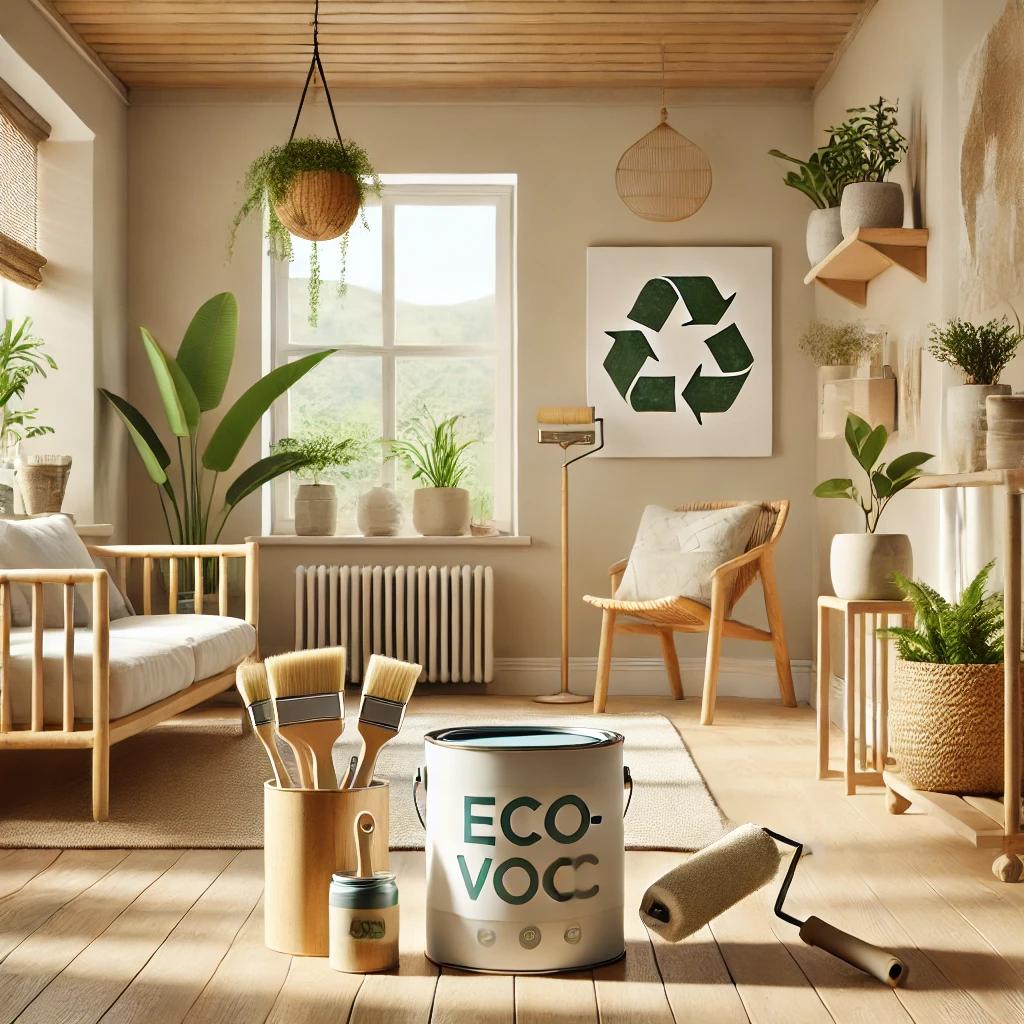Sustainability is no longer just a trend—it’s a lifestyle that more homeowners are embracing, even when it comes to home improvement projects. Painting your home can be eco-friendly and sustainable if you use the right materials and techniques. Here are the top tips for ensuring your painting project is kind to the planet and your health.
1. Choose Low-VOC or Zero-VOC Paints
Volatile Organic Compounds (VOCs) are harmful chemicals that traditional paints release into the air, contributing to indoor air pollution and environmental damage. Opt for low-VOC or zero-VOC paints to minimize toxic emissions.
Why It Matters:
- Improves indoor air quality.
- Reduces health risks such as respiratory issues.
- Decreases environmental impact.
Pro Tip: Look for paints certified by organizations like Green Seal, Greenguard, or LEED for added assurance.
2. Use Natural or Recycled Paints
Natural paints are made from plant-based ingredients, minerals, and natural pigments, making them biodegradable and free of harmful toxins. Recycled paints, on the other hand, repurpose leftover or discarded paint, reducing waste.
Benefits:
- Lowers the carbon footprint of your project.
- Provides a unique, rustic finish.
- Supports a circular economy by minimizing waste.
3. Prep and Clean with Eco-Friendly Products
Surface preparation often involves cleaning agents and primers, many of which contain harmful chemicals. Instead, choose eco-friendly cleaning solutions and biodegradable primers.
Sustainable Cleaning Tips:
- Use vinegar-based or plant-based cleaners.
- Avoid solvents with strong chemical fumes.
- Opt for water-based primers for better environmental compatibility.
4. Dispose of Paint Responsibly
Improper disposal of leftover paint can lead to soil and water contamination. Follow local guidelines to ensure that you dispose of paint safely.
Tips for Safe Disposal:
- Donate leftover paint to community projects or charities.
- Recycle paint cans and unused paint through specialized programs.
- Allow small amounts of paint to dry before disposing of them in household trash, if permitted by local regulations.
5. Reuse and Repurpose Old Supplies
Sustainability is all about reducing waste. Instead of buying new supplies for each project, find ways to repurpose or reuse existing materials.
Examples:
- Clean and reuse brushes, rollers, and trays.
- Use drop cloths made from recycled or reusable materials.
- Store leftover paint properly to use for future touch-ups.
6. Optimize Paint Usage
Using the right amount of paint ensures that you don’t waste materials or create unnecessary waste.
How to Optimize:
- Measure the room dimensions accurately to calculate the required amount of paint.
- Apply proper primer to reduce the need for multiple coats.
- Use high-quality brushes and rollers for even application and minimal waste.
7. Consider Sustainable Decor and Accents
Sustainability doesn’t end with paint. Choose eco-friendly decor and accents to complement your new walls and maintain a cohesive, environmentally conscious design.
Sustainable Decor Ideas:
- Bamboo or reclaimed wood furniture.
- Recycled or upcycled art pieces.
- Organic textiles for curtains, rugs, and cushions.
8. Choose Local and Sustainable Brands
Support local paint manufacturers that prioritize sustainable practices. By buying local, you also reduce the carbon emissions associated with shipping and transportation.
Benefits:
- Helps local businesses thrive.
- Reduces the overall environmental impact.
- Ensures that the products meet local environmental standards.
9. Improve Ventilation During Painting
While low-VOC and natural paints are safer, it’s still important to ensure proper ventilation during the painting process.
Why Ventilation Matters:
- Speeds up drying time.
- Reduces the inhalation of any residual fumes.
- Creates a more comfortable work environment.
Pro Tip: Open windows, use fans, or set up an air purifier during and after painting.
10. Maintain and Protect Painted Surfaces
Proper maintenance ensures that your paint job lasts longer, reducing the need for frequent repaints and the waste associated with them.
Maintenance Tips:
- Clean walls with gentle, eco-friendly cleaners.
- Touch up minor scuffs and scratches promptly.
- Inspect and repair surfaces annually to prevent long-term damage.
Final Thoughts
Eco-friendly painting is an easy and effective way to make your home improvement projects more sustainable. From choosing low-VOC paints to optimizing usage and maintenance, every step you take contributes to a healthier planet and home.
Want to start your eco-friendly painting project? Contact Perfecting Paint for professional guidance and sustainable painting solutions.
Request a free estimate and let’s create a greener future together!

